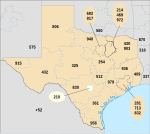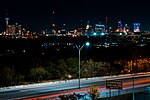Bexar County Courthouse
Buildings and structures in San AntonioCounty courthouses in TexasCourthouses on the National Register of Historic Places in TexasGovernment buildings completed in 1896James Riely Gordon buildings ... and 5 more
National Register of Historic Places in San AntonioRecorded Texas Historic LandmarksRomanesque Revival architecture in TexasTexas Registered Historic Place stubsTexas building and structure stubs

The Bexar County Courthouse is a historic building in downtown San Antonio, Texas, USA. The building was designed by architect J. Riely Gordon, and borders Main Plaza, along with such other architectural landmarks as the Cathedral of San Fernando. The style is Romanesque Revival, and the main material used is red sandstone. Ground was broken for Gordon's structure on August 4, 1891, and the cornerstone was laid December 17, 1892. After several delays, construction was fully completed in 1896. The building was added to the National Register of Historic Places in 1977. The Courthouse currently functions as the county seat of Bexar County.
Excerpt from the Wikipedia article Bexar County Courthouse (License: CC BY-SA 3.0, Authors, Images).Bexar County Courthouse
Dolorosa Street, San Antonio
Geographical coordinates (GPS) Address External links Nearby Places Show on map
Geographical coordinates (GPS)
| Latitude | Longitude |
|---|---|
| N 29.423611111111 ° | E -98.493611111111 ° |
Address
Bexar County Courthouse
Dolorosa Street 100
78205 San Antonio
Texas, United States
Open on Google Maps









